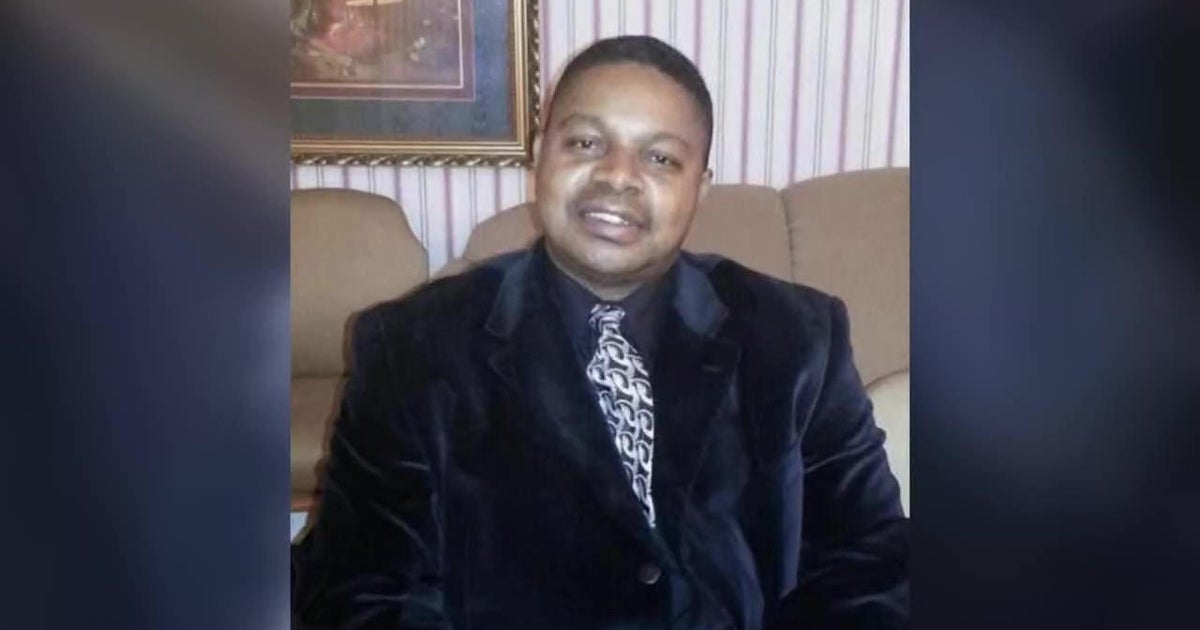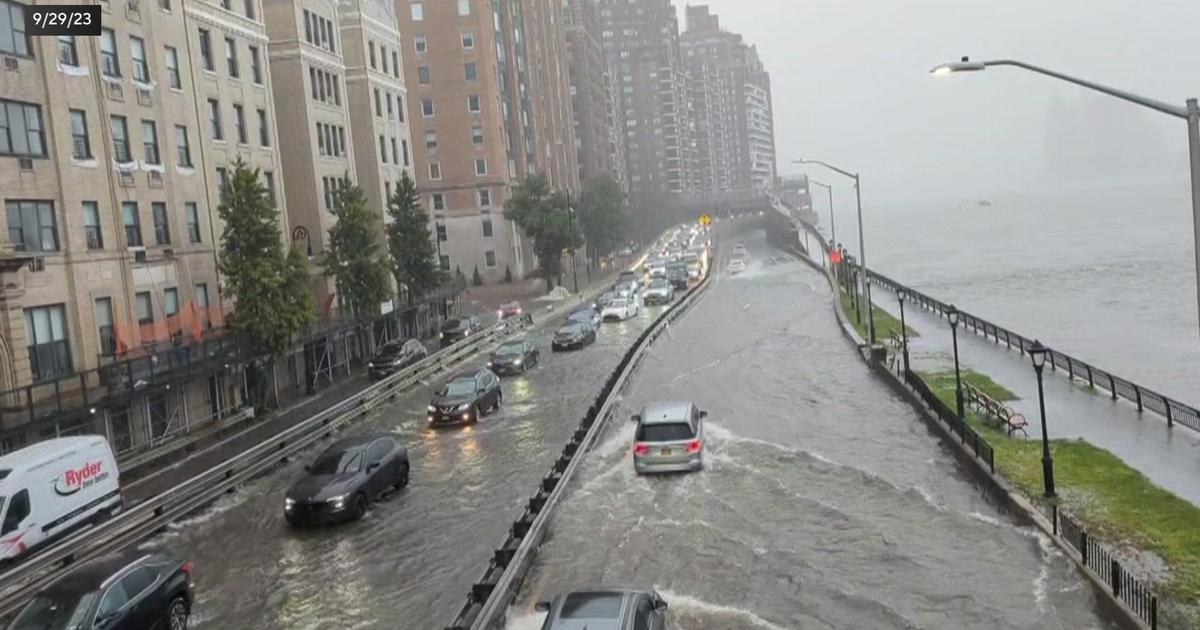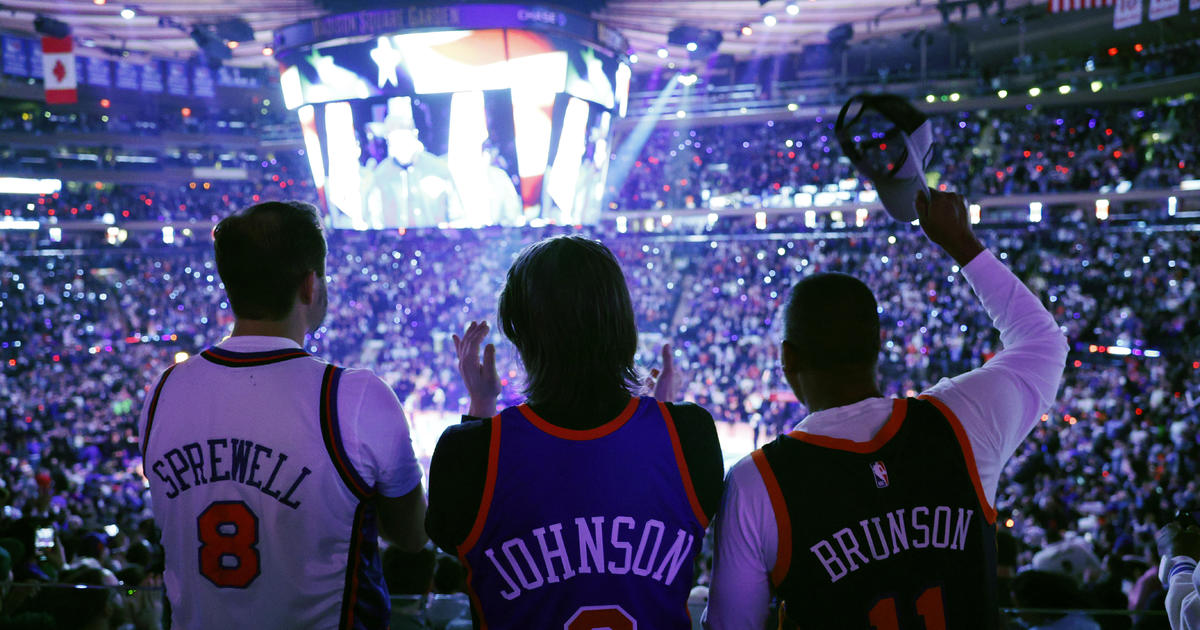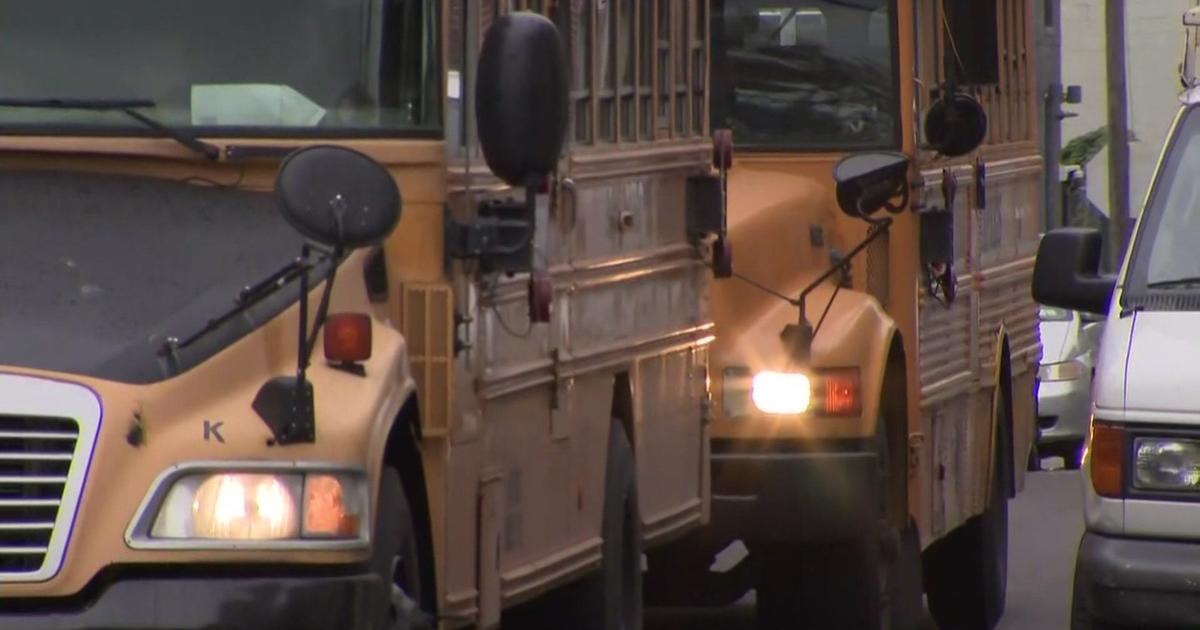Finally Gone, Ground Zero Tower In Focus At Trial
NEW YORK (AP) -- From the instant the World Trade Center's south tower crumbled into it, the somber bank building next door began to extract a toll no one imagined.
Contaminated by toxic debris from the Sept. 11 terror attacks, the former Deutsche Bank building took hundreds of millions of dollars and more than nine years to dismantle. And it claimed the lives of two firefighters who died in a blaze that exposed a litany of failures by a company and government agencies involved in what was supposed to be one of the most carefully scrutinized projects in the city.
After a costly, lengthy investigation that at one point directly pointed at the city, Manhattan prosecutors charged a construction-company foreman and two supervisors with manslaughter in the 2007 blaze. Jury selection in their trial is expected to start Monday.
To the father of one of the slain firefighters, the trial seems to be about a drop of blame in a sea of responsibility.
Joseph A. Graffagnino is disgusted by the charges, but he's also angry that the three construction officials are the only people facing them.
"If they did what the district attorney said they did, then they should be held liable to the umpteenth degree," he said in an interview. "But letting other people get away scot-free, the people who told them what to do ... to me, that's criminally wrong."
Prosecutors say the men knew about, didn't fix and covered up a major break in a crucial firefighting water pipe that turned the burning building into a death trap. The men say they're being faulted for regulators' mistakes and a maze of barriers in the building that were meant to contain toxins, but made the fire worse.
Prosecutors and defense lawyers have been barred from speaking about the case outside court. The city fire and building departments and the city-state agency that until recently owned the building declined to comment on the case this week.
The 2001 terror attack carved a 15-story slash in the 41-floor bank building, coated it with toxins and left tragic traces. While no one in the bank building died, more than 700 body parts of attack victims were eventually found there.
After disputes over what to do with the building and who should pay, the Lower Manhattan Development Corp. -- a young city-state agency created to help coordinate rebuilding -- agreed in 2005 to buy the building, clean it and take it down.
With a national spotlight on the trade center site, a web of agencies involved and concerns about whether taking apart the toxic tower would contaminate the neighborhood, the demolition "became part of a larger political and environmental challenge," said Mitchell Moss, a New York University urban planning professor.
It would take more time and money than initially expected; the LMDC spent about $300 million after insurers paid Deutsche Bank hundreds of millions of dollars.
The process was beset by minor fires and sometimes harrowing accidents -- including a pipe plummeting through a neighboring firehouse's roof and hurting two firefighters -- before a worker's discarded cigarette sparked a blaze that roared through nine floors on Aug. 18, 2007.
Firefighters encountered a thicket of hazards, including blocked stairwells and an air system that was meant to keep toxins in but ended up concentrating smoke. And a basement break in a critical water conduit called a standpipe kept them from getting water to the burning floors for about an hour, authorities said.
Trapped in thick smoke, Robert Beddia, 53, and Joseph P. Graffagnino, 33, died on the building's 14th floor.
Investigators would find that the fire department, which was supposed to inspect the building every 15 days, hadn't done so in more than a year. Building, environmental and labor inspectors didn't realize that stairwell barriers meant to contain toxins hadn't been built to let firefighters get through.
Then-Manhattan District Attorney Robert Morgenthau put it bluntly: "Everybody who could have screwed up screwed up here."
The city and general contractor Bovis Lend Lease acknowledged mistakes and agreed to measures meant to make amends: Bovis paid $10 million as a "memorial fund" for slain firefighters' families and pledged to finance a $2 million fire safety academy and the fire department added some 40 inspection and auditing jobs.
Officials spent months in a probe that once aimed to charge city agencies. But the only ones criminally charged were site safety manager Jeffrey Melofchik, 49, who worked for Bovis; Mitchel Alvo, 58, the cleanup director for subcontractor John Galt Corp.; Salvatore DePaola, 56, a Galt foreman; and Galt itself.
After the standpipe broke, Alvo and DePaola had a 42-foot-long section of the pipe cut up and taken away, and Melofchik filled out checklists saying the tower's fire-suppression equipment was working fine, prosecutors say.
All three "acted in a morally blameworthy and egregious manner," Assistant District Attorney Noah D. Genel said at a hearing in July.
Defense lawyers have said the men didn't recognize the pipe's function, inspectors didn't flag the break and the men are being singled out for a fire fueled by a welter of hazards and oversight failures.
Prosecutors are ""scapegoating a few defenseless people at the bottom of the line" because "they didn't have the nerve" to indict government agencies or were unable to, Melofchik's lawyer, Edward J.M. Little, said at the July hearing.
Morgenthau said it would have been fruitless to try to prosecute the city because of a legal doctrine that generally makes governments immune from criminal prosecution, though individual officials and employees sometimes are charged with crimes.
It's an argument that doesn't move the elder Graffagnino, who says he and his relatives don't plan to attend a trial they see as "half of a case."
It will start little more than a month after the former bank building was finally, fully torn down. Officials are preparing to start excavating work on a facility that will security-screen vehicles to enter the new trade center's parking garage.
Still, living near the stripped-down site, local community board member Catherine McVay Hughes thinks of the lives it took to get there.
"No one thought that it would cost so much," she says.
(Copyright 2011 by The Associated Press. All Rights Reserved.)



